A city that fuses a long and rich heritage with modern innovation, Shanghai is a must-visit international travel destination for people from all walks of life. Often referred to as the ‘Pearl of the Orient,’ this bustling city has something for everyone: history lovers, adventurous foodies, shopaholics, or casual wanderers. Through the city’s unique culture, superb food, and breathtaking skyline, one can have an unforgettable experience. This guide provides essential information on everything from insider tips to sights that MAKE your trip to Shanghai remarkable.
What Are the Top Shanghai Attractions You Must Visit?
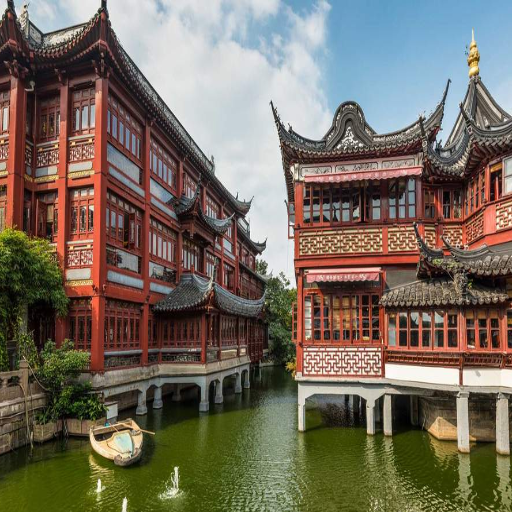
Discover The Bund and Its Iconic Skyline
Recognized as one of the most iconic sites in Shanghai, the Bund features an extensive waterfront promenade on the western banks of the Huangpu River, overlooking the modern skyline and architectural marvels from the colonial era. Major sites include the lavish skyscrapers in the Lujiazui financial district and the incredible Art Deco and neoclassical buildings.
The neon lights illuminating the skyscrapers in Shanghai during the night present a stunning view. Walking alongside the promenade ensures phenomenal views of famed places like Jin Mao Tower, Oriental Pearl Tower, and Shanghai Tower. Take any cruise on the Huangpu River, and you are guaranteed spectacular skyline views. No place provides such a mixture of modern architecture alongside traditional history, making the bund a must-visit site for photography lovers, architects, and historians.
Uncover the History at the Shanghai Museum
This museum holds over 120,000 relics and invaluable pieces of bronze ware, ceramics, jade, calligraphy, and more. The Shanghai Museum, located on People’s Square, is considered the heart of ancient Chinese art and culture. Its round upper part, symbolizing the heavens, with its square base representing Earth, truly embodies traditional Chinese cosmogony structure.
Shanghai Museum showcases significant pieces of ancient Chinese art and culture, enabling people to discover the history. From the technical aspects, the area is approximately 39200 square meters, which includes three exhibition halls and 11 galleries. Each gallery displays pieces from dynasties like the Shang and Zhou. To preserve fragile pieces, the lighting inside the museum is precisely set, and temperature and humidity are controlled to ensure it is stable enough for long-term conservation.
Experience the Serenity of Yuyuan Garden
Yuyuan Garden serves as a perfect getaway from the hustle and bustle of the city. The serene beauty of the garden gives a genuinely harmonious experience to all the visitors. Unlike the modern city of Shanghai, this garden offers a slice of life during the Ming Dynasty in the 16th century. Yuyuan Garden, spanning five acres, beautifully integrates traditional Chinese art by featuring ponds, pavilions, rockeries, and other precious works of nature. Symbolic representation is one of the many beauties of the Chinese Garden. Each of its elements is designed in perfect balance to exhibit serenity.
The Grand Rockery and the Exquisite Jade Rock are some of the highlights of the Yuyuan Garden that all the tourists admire most. The Grand Rockery features traditional dryscaping and towering limestone rocks rising to 12 meters, granting visitors a magnificent view of the garden. The Exquisite Jade Rock is also an impressive 14-foot-tall marvel with a unique porous surface that allows water and incense smoke to pass through, creating awe-inspiring visual effects. These features represent how natural elements intertwine with human resources. The Chinese Garden design is known for its beautiful aesthetics, and these rocks only enhance its beauty.
Modern conservation efforts are vital to ensure that the garden retains its historic charm and condition. The preservation methods involve scrupulous washing of the rock formations, constant reproduction of ancient species of plants, and the application of ecologically controlled irrigation methods to adjust the moisture content of the ponds and vegetation. Along with these technical measures, the Yuyuan Garden integrates accurate historical restorations, making it a living monument of the culture of Shanghai and giving tourists an appreciative insight into the ethos and aesthetics of ancient China, which is now more than ever February.
Where to Stay: Best Hotels in Shanghai
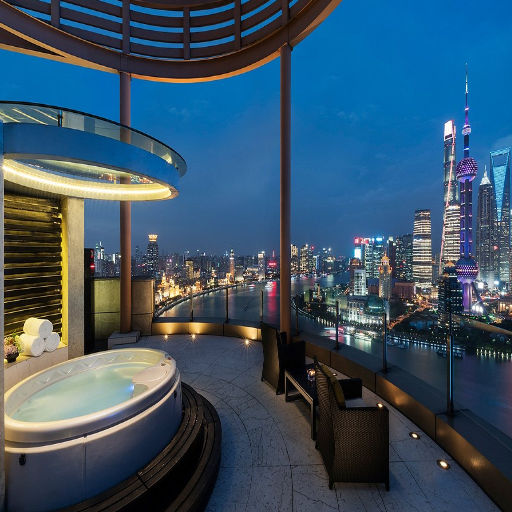
Choosing a Hotel in Downtown Shanghai
When booking a hotel in the heart of Shanghai, consider other significant aspects that can guarantee a comfortable stay. Check where the hotel is relative to essential sites like The Bund, Nanjing Road, or People’s Square. Being close to public transport, such as metro stations, is vital for traveling around the city. Ensure the hotel meets your general Wi-Fi service, cleanliness, and dining facilities requirements. As for the technical parameters, think about these:
Location hindrance – the time it takes to walk to significant landmarks such as The Bund (it is best to be within 5km) and the position of the nearest metro line (it is most conveniently within 500m).
Room Specifications – Room size (minimum of 25 m² for comfort), adequate soundproofing, and air conditioning (should be there for all seasons).
Technology – high-speed internet (not lower than 50Mbps) and enough sockets for devices.
Wording – breakfast for those staying on the premises and different national dishes to meet various dieting needs.
With these in mind, choosing a hotel in Shanghai becomes easy, contributing to an enjoyable stay in the city’s heart.
Luxury Accommodations in the Pudong District
Along with ideal comfort and convenience, The Pudong District has different luxury accommodations to suit every traveler. Here are short responses to the most critical questions:
Room Comfort: Luxury hotels in Pudong feature exquisite American-style furniture, premium-quality bedding, and variable-control lighting systems. Advanced HVAC systems and soundproof windows ensure comfort and noise reduction for every guest.
Technology: High-definition, high-speed internet is difficulty-free in nearly all luxurious systems provided in southern Pudong. Other amenities in standard rooms include multiple conveniently placed power sockets for device charging.
Dining Options: Multilingual service is employed for buffet-style on-location meals, which are customarily provided and encompass a blend of delicate Chinese, European, and fusion cuisines. Likewise, other vegetarian, gluten-free, and vegan meals are custom-fit for strict dietary needs.
Pudong Hotel guarantees a luxurious stay while meeting comfort needs with these features.
Budget-Friendly Hotels Near Nanjing Road
Those wishing to travel without spending too much on accommodation can find numerous friendly but comfort-sustaining options closer to Nanjing Road. Most hotels around the entertainment and shopping district are comfort-sustaining and affordable. Also, these hotels provide essential services like clean rooms that guarantee a good experience. Here are some recommended features and parameters to consider:
Proximity to Nanjing Road: As expected, budget hotels are always poised with a few clicks of the Nanjing Road area. Such proximity assists in traveling to popular shops and landmarks within the shortest period possible.
Room Features: These remain basic and economical. Expect clean and modestly furnished rooms with free Wi-Fi, air conditioning, private showers, and sometimes little desks for work associated with air travel.
Price Range: The basic charge for a room is $30, but it could reach $70 during peak seasons when business is high around the area.
Added Amenities: Free breakfasts, laundries, and front desks serving visitors round the clock are some attributes used at lower-sustaining hotels.
Transport Connectivity: High comfort sustaining hotels right next to the subway as Line 2 and Line 10 offer direct service to central locations in the city and airports.
From this, and infused with sufficient thought, looking around for economical options that barely compromise on convenience while balancing on the cost, one ends up geared towards the Nanjing Road area.
How to Experience the Local Culture in Shanghai?
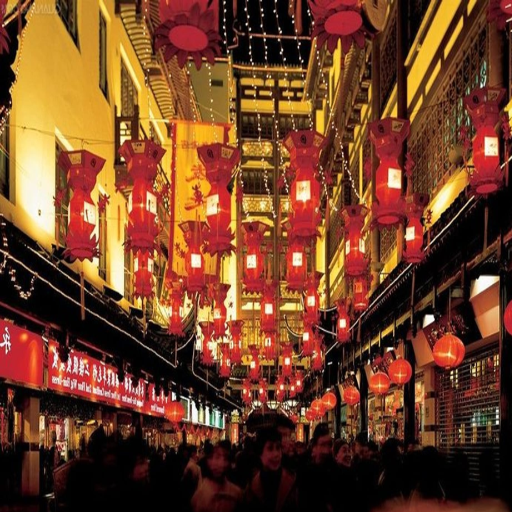
Visit the French Concession for a Blend of Cultures
A visit to Shanghai should include an exploration of the French Concession, seamlessly incorporating both European and Chinese elements. To make the most out of this area:
Architecture: The streets are lined with quaint shikumen and colonial-style mansions, stunning timelines of multicultural history.
Cuisine: Besides Chinese food, you can enjoy local French pastries and delicacies at international cafes.
Shopping: Many galleries and boutiques display local artistic and modern craft.
Historical Landmarks: Famous places include Fuxing Park and the Sun Yat-sen former residence.
Focusing this portion of your visit will allow you to appreciate the contemporary pulse and rich heritage of the French Concession.
Explore Traditional Chinese Tea Houses
Traditional Chinese tea houses functioned as respite niches for enervated brewers before the practitioners of the rich skill made tea culture as central to life as food. The tea houses provided an array of choices ranging from green and oolong to pu-erh and jasmine, each brewed with a variety of factors where steeping time, water temperature, and even the server influenced the outcome.
Water temperature: It generally switches between 70C (158F) and 100C (212F), depending on the type of tea.
Steeping times also differ from tea to tea; lightly brewed teas roll over in 10 seconds, while stronger black or pu-erh teas can take several minutes.
Teaware: Gaiwans, Yixing clay teapots, and even porcelain cups enhance the tea’s aroma and taste.
Furthermore, while enjoying tea, these locations add to the ambiance, allowing for deeper relaxation through music, calligraphy shows, or other forms of art to brew the tea in peace. The culmination of these factors provides practitioners with a deeper realization of the world of Chinese tea culture.
Attend a Cultural Performance at the Shanghai Grand Theatre
Watching a cultural show at the Shanghai Grand Theatre is a great way to engage with the city’s artistic spirit. This venue offers numerous shows, such as ballets, operas, symphonies, and traditional Chinese dramas, catering to diverse artistic tastes.
Location: In the very center of Shanghai at People’s Square, easy to reach by metro and other public transport.
Seating: Over 1,800 seats are available on three levels, ensuring good sight and commendable acoustics from almost every place in the auditorium.
Acoustics: All performances will benefit from the elaborate advanced sound systems and architectural acoustics designed for the theatre.
Schedule: The schedule ranges from International touring productions to locally Chinese cultural performances. Visitors should look up the official site for the most current schedule.
Ticketing: They are commonly found online and change on demand and seating rank. It is wise to buy in advance for seats at favorite performances.
While the world’s leading performances are staged, Shanghai is also noted for its effort in nurturing the arts, which remains the most relevant.
What Are Some Travel Tips for First-Time Visitors to Shanghai?
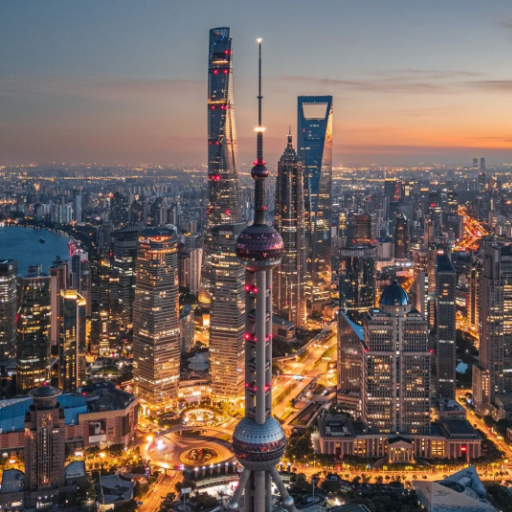
Navigating Shanghai’s Public Transportation
Understanding public transportation in Shanghai can be simple, but it did take me a few minutes to adjust. In this case, I would definitely suggest the Shanghai Metro. It is easy to use, affordable and covers almost all of the city’s neighboring regions. Acquiring the Shanghai Public Transport Card (or Jiaotong Card) is necessary as it enables easy transfers between the metro system, bus services, and even taxis and helps to save a lot of time.
If you travel via metro, buses, and trains, work with a transparent system of colors and markers announced in Chinese and English. Prices differ based on distance and start at ¥3. If you would like to travel by train, they start around 5:30 AM and finish at 11 PM, depending on the line. With the buses, keeping small bills and change tends to be easier. Taxis are also another easy option if you would like to go elsewhere. They start at ¥14 but may be harder to spot during rush hour.
For added convenience, you can also consider adding Metro Man or DiDi, which is more like a Chinese Uber. They offer more convenience when it comes to booking rides or just navigating around the city. Make sure to always have a bit of extra time if you are traveling by public transport during peak hours.
Understanding Local Customs and Etiquette
If you are traveling to Shanghai, I recommend remaining vigilant about your surroundings, especially in incredibly busy places like metro stations or famous tourist destinations, to avoid getting pickpocketed. Moreover, make sure to have a photocopy of your passport and visa handy while keeping the documents safe. Use authorized taxis or reputable ride-hailing apps for secure transportation and avoid accepting unsolicited tour or merchandise offers.
From a technical perspective, localization efforts may include embedding map applications that alert users of potential danger in real-time or provide local context to help orient people in the unfamiliar city. In addition, travelers can be offered extra comfort by booking services that support dangerous payment methods and have strong safety instructions in many languages. These criteria effectively combine sociocultural and practical issues related to safety.
Safety Tips for Travelers in Shanghai
In crowded areas such as metro stations or famous tourist sites, it would be beneficial to try to stay aware of your environment to avoid any pickpocketing incidents. If you travel to Shanghai, remember always to carry a copy of your passport and visa while keeping the original documents safe. To ensure safe transportation, always employ ride-hailing services or licensed taxis; unsolicited tours and reasonable offers should always be avoided.
From a cultural view, localization may try to incorporate features such as maps with real-time danger notifications or more appropriate means of guiding a user around town. Moreover, travel booking websites that support secure payments and give detailed safety information in several languages provide added reassurance. The combination of these features focuses on practical and cultural aspects of safety issues.
How to Capture the Best Photos During Your Trip?
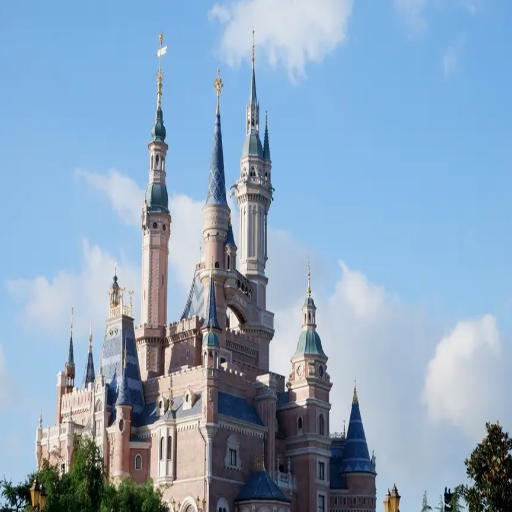
Top Photo Spots Along The Bund
For the most enchanting photos along The Bund, I suggest starting from Waibaidu Bridge, which has breathtaking views of the Huangpu River. This location is particularly stunning at either sunrise or sunset due to the magical light effect the sun casts on the water. Another marvelous location is the promenade, which allows you to capture the colonial-era buildings and the cutting-edge skyscrapers in Pudong. Additionally, at night, the pristine light of the Oriental Pearl Tower and the other buildings serve as a magnificent background for long-exposure shots.
Now, to help expose some of those lingering shots, I took some technical parameters and tips into account to ensure quality results.
Golden Hour (Sunrise/Sunset): The light is warm and soft, with less harsh shadows, making it ideal for masking photographic activity.
Tripod for Night Shots: At night, the cameras take in more light, which increases the chance of shaking, making it essential to have a sturdy tripod on hand.
Wide-Angle Lens: Shot with a wide-angle lens to capture the skyline while having a panoramic perspective of almost the river’s surroundings. The best range is 16-35mm.
Polarizing Filter (Optional): This helps tone down the set during the day, reducing the glare from the sun on the water and making the sky pop.
With this information in hand, rest assured that taking photographs around The Bund will in no way fail to showcase the photo that best encapsulates the majesty of Shanghai.
Photographing Shanghai’s Iconic Skyscrapers
When photographing the famous skyscrapers in Shanghai, I ensure that the time of the day is aligned with the approach I intend to use to capture the photographs. For example, suppose I intend to capture the skyline during sunset. In that case, I prepared my camera’s settings to be at a lower ISO, which ranges between 100 and 200, and set the aperture to have a range of 8 to 11. A tripod is beneficial because, with lower light levels, the shutter speeds required are slower to balance the light.
For the technical approaches that highlight the perspective of the height of the skyscrapers, I set my lenses to wide-angle settings of 16 or 35 mm while also ensuring that I am positioned on the ground and have my camera angled up. As these steps can distort vertical lines, I provide a bubble level on the tripod to balance it horizontally and vertically.
When aiming to shoot at night, my approach involves increasing my ISO to around 800 or 1600 to capture the illuminated buildings effectively. I use a higher aperture of f-number in the broadest range of around four to five. With shutter speeds between several seconds, these steps help capture the lights and vibrant colors of the buildings. However, a camera shake is possible, so a remote shutter is recommended.
The settings might vary a bit depending on your mood and weather. However, if you follow these parameters, the photographs of Shanghai’s stunning architecture will be excellent.
Best Times to Capture the City in Light
While capturing the breathtaking skylines of Shanghai, the blue and golden hours benefit outdoor photography. The best lighting for warm and cool-toned images characterizes these moments. The lighting is diffused and softer during these periods, making it easier for the eyes.
When photographing during the golden hour, I suggest an aperture between f/5.6 and f/8 to balance sharpness and depth. Setting ISO to 100 or 200 will also increase image quality. Finally, set your shutter speed to between 1/30 and 1/250, which is a good range for most shots.
For the blue hour, use more extended exposure techniques and a smaller aperture ranging from f/8 to f/11 to capture the burst effects of streetlights. This will maintain sharpness while your shutter speed is set to a few seconds. A tripod will also come in handy to maintain picture stability.
Frequently Asked Questions (FAQs)
Q: Which must-see places would you add to Shanghai’s travel guide in 2025?
A: Remember to visit the Bund waterfront, the Oriental Pearl Tower, Yu Garden, the Shanghai Museum, and the former French concession—all these landmarks are a must in any Shanghai travel guide for 2025. The animated modern areas, such as Xintiandi and Zhujiajiao village, will also capture your attention.
Q: What do you need to keep in mind while planning a tour in Shanghai?
A: When planning a tour around Shanghai, consider traffic, your time of visit, and the distance between different sites. To better experience this cosmopolitan city, take public transportation or guided tours so you will not miss out on the beautiful buildings and culture surrounding you.
Q: Which classic Chinese restaurants does Shanghai offer?
A: Yes. Shanghai has countless restaurants serving classic Chinese dishes. Search for places that serve xiaolongbao (soup dumplings) or Western-style dishes combined with Chinese food. User reviews will lead you to the best places to eat.
Q: How can I experience the contrast between modern and traditional Shanghai?
A: To appreciate Shanghai’s modern and traditional cultures side by side, one can visit Lujiazui and its enormous skyscrapers, then historical temples and the Yu Garden. The streets of the French concession are also filled with a fascinating blend of different multicultural influences.
Q: What is the best time for a tourist to visit Shanghai?
A: For someone new to the city, the best time to visit Shanghai is when the weather is mild and pleasant, meaning during the spring (March to May) and autumn (September to November). This would be perfect for traveling to outdoor places and participating in activities that aren’t required in extreme temperatures.
Q: Can I go off the beaten path in Shanghai, and if so, where should I go?
A: Of course! Zhujiajiao Water Village is perfect for water-side views, while its corners have lesser-known sites that will be a wonderful change of pace from the popular tourist spots. These places combine to give less authentic views of Shanghai, making it a true and breathtaking travel destination.
Q: What should I know about Shanghai Pudong Airport’s transport links?
A: Traveling to and from Shanghai Pudong Airport is very easy. The Maglev train provides quick access to town, while other options include shuttles and taxis. Remember to check for any changes to traffic patterns so that you can time your arrival or departure to the area properly.
Q: Do you have any local tips for engaging with people in Shanghai?
A: Patience is key when engaging locals in Shanghai. Many do not speak English, so learning a few basic phrases in Mandarin will help. Additionally, having an open mind towards their customs will gain you respect.
Q: Are there any differences in food-related services in Shanghai compared to other parts of China?
A: Shanghai is known for its wide variety of cuisine, some traditional Chinese and others foreign. From street stalls to sophisticated restaurants, there is something for everyone—even for those with the most refined tastes. The experience of trying the great local dishes will truly be wonderful.